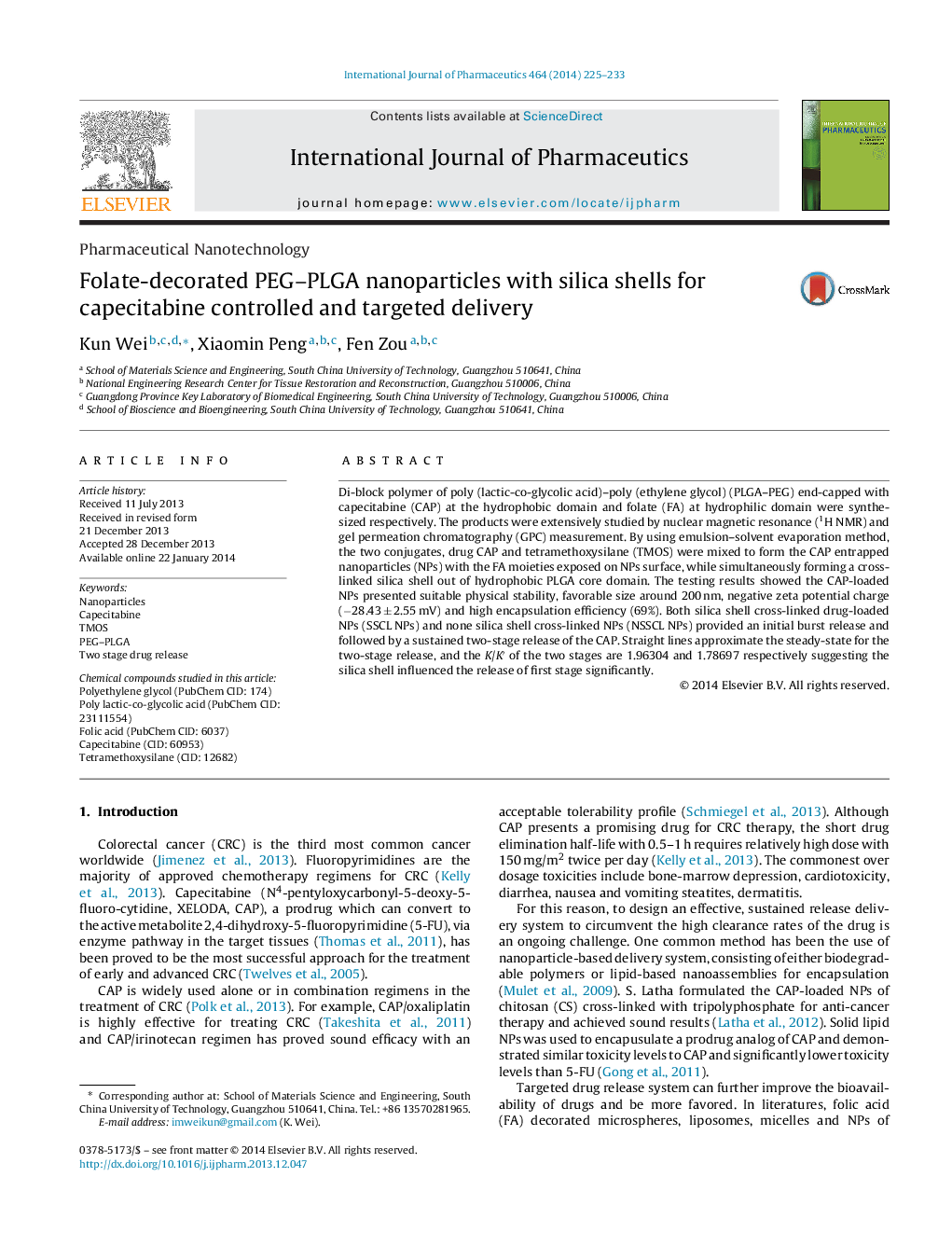| Article ID | Journal | Published Year | Pages | File Type |
|---|---|---|---|---|
| 2501884 | International Journal of Pharmaceutics | 2014 | 9 Pages |
•Capecitabine was chemically conjugated to PEG–PLGA successfully.•Proportionally blend of FA-PEG–PLGA and PEG–PLGA-CAP can form stable NPs.•The application of TMOS reinforced the release barrier in nanomedicine carriers.•The drugs release results apply to the two stage release.•The first stage release is relatively influenced greater by the silica shell.
Di-block polymer of poly (lactic-co-glycolic acid)–poly (ethylene glycol) (PLGA–PEG) end-capped with capecitabine (CAP) at the hydrophobic domain and folate (FA) at hydrophilic domain were synthesized respectively. The products were extensively studied by nuclear magnetic resonance (1H NMR) and gel permeation chromatography (GPC) measurement. By using emulsion–solvent evaporation method, the two conjugates, drug CAP and tetramethoxysilane (TMOS) were mixed to form the CAP entrapped nanoparticles (NPs) with the FA moieties exposed on NPs surface, while simultaneously forming a cross-linked silica shell out of hydrophobic PLGA core domain. The testing results showed the CAP-loaded NPs presented suitable physical stability, favorable size around 200 nm, negative zeta potential charge (−28.43 ± 2.55 mV) and high encapsulation efficiency (69%). Both silica shell cross-linked drug-loaded NPs (SSCL NPs) and none silica shell cross-linked NPs (NSSCL NPs) provided an initial burst release and followed by a sustained two-stage release of the CAP. Straight lines approximate the steady-state for the two-stage release, and the K/K′ of the two stages are 1.96304 and 1.78697 respectively suggesting the silica shell influenced the release of first stage significantly.
Graphical abstractFigure optionsDownload full-size imageDownload high-quality image (224 K)Download as PowerPoint slide
